I saw a lot of scattered crossbones, a pair of skulls and unbitten hands with bloody fingers - described the terrified hero of Daniel Defoe's book, a shipwrecked man lost on an exotic island. He realized that he could come face to face with a savage horde hungry for human flesh. But he did not expect to meet ... colonizers from the Baltic Sea. And he might have had the opportunity!
It is believed that the famous novel "The Life and Strange Surprizing Adventures of Robinson Crusoe" (1719) was based on the adventures of the sailor Alexander Selkirk, who spent four years alone on the island of Juan Fernandez, today called Robinson Crusoe Island, off the coast of Chile. However, this is not the only, or perhaps even the best, interpretation.
In a recently published work entitled "Crusoe" American researcher Katherine Frank pointed out that Defoe could have been inspired by the figure of the slave trader Robert Knox, sent to a lonely piece of land by the ruler of Ceylon. Upon his return to England in 1680, he published memoirs that the writer must have known.
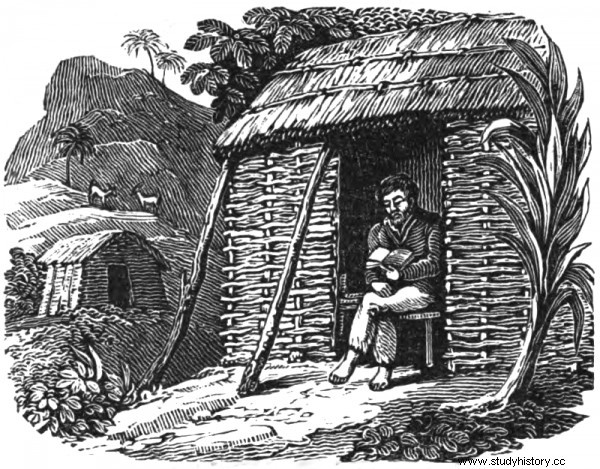
The legendary seaman Alexander Selkirk spent almost five years on a desert island. The illustration shows a Scottish shipwrecked man reading the Bible in a hut he has built (source:public domain).
Well, a writer could learn from the experiences of more than one survivor. More important for us is the fact that he placed his Robinson not on an island near Chile and not in Ceylon, but between the mouth of the Orinoco River and Trinidad - because this is where, according to the book, the Crusoe ship crashed. And the description of the location and nature of the novel's Robinson's island fits like a Tobago glove.
A subject of Jan Kazimierz
For example, Defoe was able to get to know the island from Captain John Poyntz's English pamphlet "The present prospect of the famous and fertile island of Tobago" (1683), which encouraged him to settle on this remote, 420 square kilometer piece of land.
The writer, however, lied because in 1659 - when Crusoe was to land on Tobago - the island was not deserted at all! As Michael Morys-Twarowski writes in the book “Polskie empium. All countries conquered by the Republic of Poland ”, Robinson:
would not need to build anything here. Fort Jacob was on the hill. And if the soldiers stationed there lent the English survivor a map, he would think:I'm in the Commonwealth.
How it's possible? Well, Tobago tried to colonize Courland in the 17th century - a principality from what is now Latvia, which is a fief of the Polish king!
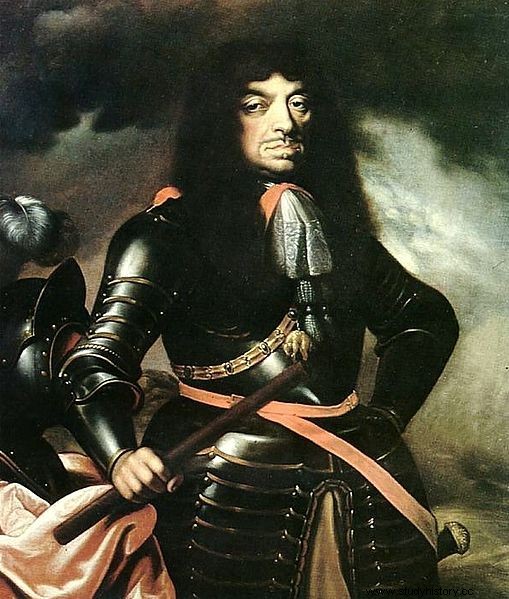
The lovingly reigning Jan Kazimierz. Could one of his subjects be Robinson Crusoe? (source:public domain)
The ingenious Robinson would be very useful to the Kurlanders (they used the skills of settlers of various nationalities). Oh, he would have to consider himself a subject of the Courland princes of the Kettlers and of the lovingly reigning King Jan Kazimierz in the Polish-Lithuanian Commonwealth. Except that the life of the settlers on the island was not easy at all.
In the clutches of the cannibals
The Caribbean tribes inhabiting these areas did not intend to give their homeland to the Europeans. However, they were in conflict with each other. Robinson's friend, the Indian Friday, had to flee from cannibals who wanted to sacrifice him. It was not an unfounded invention of the writer. The Caribbean was known for its ritualistic cannibalistic practices and the similarity of the words carib and the cannibal is not accidental.
This article has more than one page. Please select another one below to continue reading.Attention! You are not on the first page of the article. If you want to read from the beginning click here.
During the fights that necessarily took place on Tobago between the natives and the colonizers, they had to move muskets, knives and teeth more than once. I turned to face the pursuers, and when one of them was running past me, I smashed his skull with the butt; for I was afraid to shoot, so as not to lure the whole crowd with a bang - Describes the Robinson in the book about his experiences.
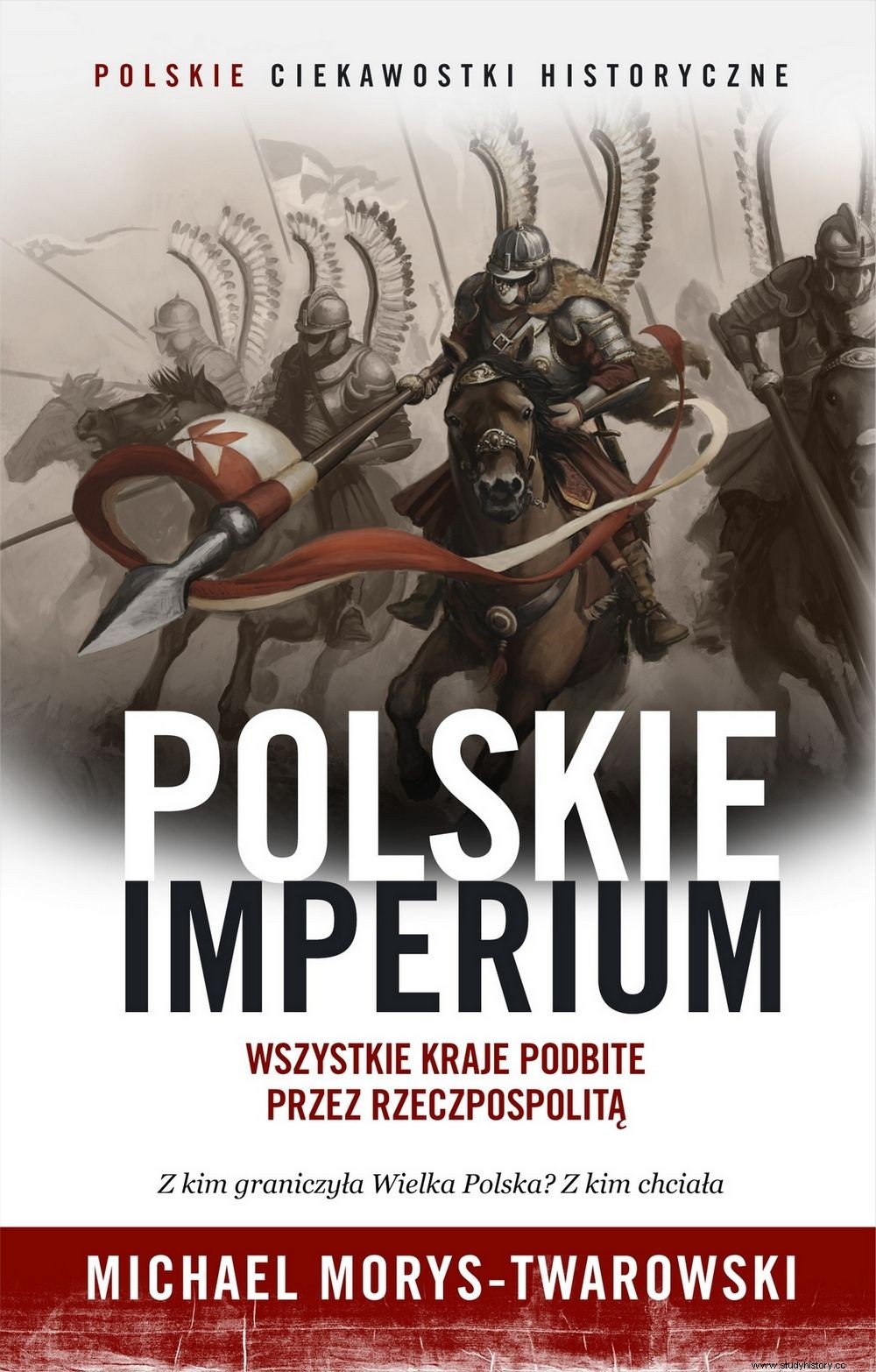
The publication of this article was inspired by the book by Michael Morys-Twarowski entitled “Polskie Imperium. All countries conquered by the Republic of Poland ”. Click to buy it 30% off!
If someone associates zombies with cannibals, the Caribbean fits these associations perfectly. It is true that the word "zombie" itself does not come from here, but from Africa. It came to the Caribbean islands with slaves, their superstitions and magic-poisoning practices. Robinson would also have to deal with Black Continent magic in Tobago . The first shipment of live goods came to this island in 1654. The Curlanders imported slaves from their African colony:The Gambia. Blood, sweat, tears and fear - these were the real realities of Robinson's "paradise" island.
Zombie cucumber
Slave revolts and escapes, fights with Caribbean tribes, magic and cannibalism ... these are the perfect conditions for the hatching of faith in zombies. We can imagine Robinson hiding in the fort with the Courland settlers, chopping muskets into a crowd of Indians and Africans storming the stockade - bloodthirsty, drug-induced and superstitious. Looking like ghosts, the walking dead .
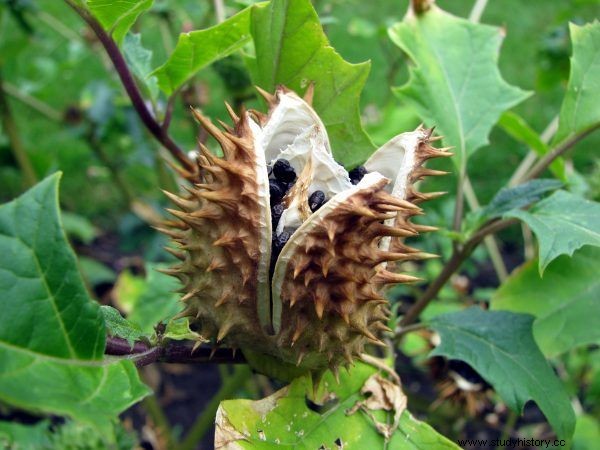
Datura Dziedzierzawa. Can this inconspicuous plant turn people into obedient zombies? Caribbean shamans had no doubts about it (photo Nova, license CC BY 3.0).
Yet Robinson might have been dealing with completely different zombies. And quite real! According to researchers of Afro-Caribbean traditions, the key to understanding the belief in the "living dead" present there is the belief that local shamans know preparations that can deprive people of will, initiative and memory . So that they can do whatever they want with them later.
Indian or African sorcerers may have tried to bombard Tobago ... white settlers. Or at least use one of the preparations needed for zombification to reduce Europeans to the role of useless puppets. It would be enough for them to apply to them with their food a plant that has spread from Mexico to North America and the Caribbean, and is also known in Africa and Europe. It is Datura stramonium ( datura stramonium ), known as the "zombie cucumber" .
Helpless Musketeers
The soldiers put down their muskets. They are no longer themselves. Their faces twist in bizarre grimaces, grinning, hiding in corners or fooling around. Some are so dull that they sit in their own excrement doing nothing of it . This was the behavior of the British soldiers poisoned with Datura, who were supposed to put down the so-called Bacon rebellion in the North American colonies in 1676.
Courland soldiers in Tobago would be likewise useless after the "zombie cucumber". Helpless and harmless. Also for his companion Robinson. He would not have to shoot their heads off, because they would not threaten him in any way and they would not infect him with anything terrible. It would have been enough for him to wait a few days for the Kurlanders to be high and return to the real world.
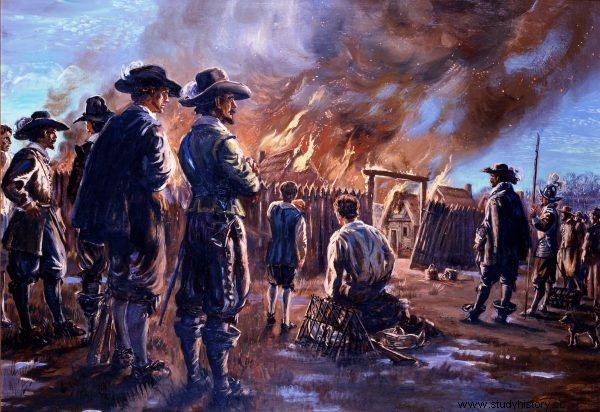
Who would have thought that British soldiers were also turned into "zombies" during the first colonial revolution in North America ... Jamestown burning in the picture (source:public domain).
At most, he would force some of his friends Ketling, Zagbao, and Kettler to bathe in order to prevent an epidemic from breaking out in the colony. It's more comedy than horror! Well, unless in the meantime the Caribbean would have developed an appetite for human sacrifice. After the "zombie cucumber", none of the intoxicated settlers would even squeal if they had gone under the knife ...
But Courland, without such slaughter, withdrew from Tobago. Disputes over the island with colonial powers from Europe, skirmishes with the Indians, distance and limited resources - these problems were too many for the principality from the Baltic Sea. That is why almost no one associates Robinson with the Courland ("Polish") Tobago. It's faster with zombies - at the end of 2014, Ivan Fanta's book "Robinson Crusoe on Zombie Island" was released, which transforms Defoe's classic novel into a grotesque with hordes of living dead bodies in the background.
